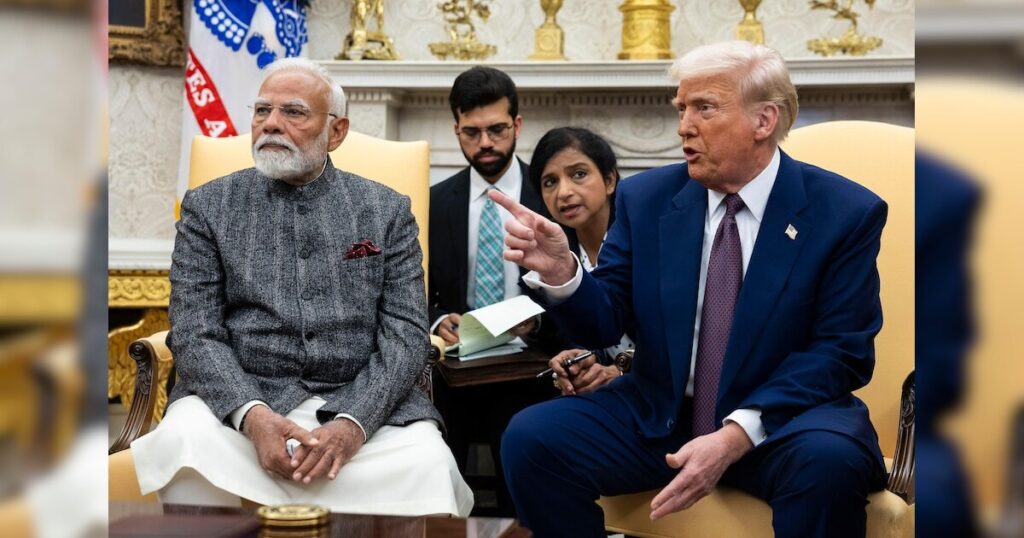NEW DELHI: India and the United States are set to deepen their economic engagement through a series of high-level deliberations on a proposed Bilateral Trade Agreement (BTA), beginning May 17 in Washington D.C. The meetings will involve top trade and commerce officials from both countries, according to a PTI report.
The Indian side is expected to be led by Commerce and Industry Minister Piyush Goyal, who is scheduled to arrive in Washington D.C. on May 16.
The meetings are aimed at injecting fresh momentum into ongoing negotiations, while evaluating progress and shaping the direction for the coming months, the report adds.
Over the course of his four-day visit, Goyal will hold ministerial-level discussions with US Commerce Secretary Howard Lutnick and United States Trade Representative (USTR) Jamieson Greer.
“This round of discussions is politically significant. The ministers will evaluate developments from the last two months and steer the negotiations accordingly,” an official told PTI.
This marks Goyal’s second visit to the US this year and forms part of a broader diplomatic initiative to advance trade cooperation between the two nations following the US’ imposition – followed by a 90-day pause ending July 9 – of a 26 per cent tariff on all goods coming from India. Indian officials are expected to use this time as leverage in the BTA negotiations. The 10 per cent baseline tariff on Indian goods, however, remains in place.
Following the ministerial engagements, chief negotiators from both sides will meet between May 19 and 22. India will be represented by Rajesh Agrawal, special secretary in the department of commerce, while the US will be led by Brendan Lynch, assistant USTR for south and central Asia. The two negotiators have previously met in April for preparatory talks, laying the groundwork for the current phase of negotiations.
The discussions come at a crucial juncture, with both countries considering an interim trade arrangement focused on goods. This is being explored as a means to achieve “early mutual wins” before finalising the broader BTA, whose first phase is targeted for completion by the autumn of 2025 (September-October).
The agreement under negotiation covers approximately 19 chapters – including areas such as tariffs, services, rules of origin, non-tariff barriers, and customs facilitation. This comprehensive framework reflects the wide-ranging scope of the trade relationship and the depth of technical discussions involved.
The upcoming deliberations will address a range of contentious issues. India is seeking duty concessions for its labour-intensive export sectors such as textiles, leather goods, gems and jewellery, chemicals, shrimp, bananas, grapes, and oilseeds. These sectors are central to India’s strategy to enhance employment and boost export revenues.
Conversely, the US is expected to press for reduced tariffs on industrial goods, electric vehicles, petrochemicals, wines, dairy products, and agricultural produce, including apples and tree nuts. American officials have also repeatedly raised concerns over non-tariff barriers that restrict the entry of US goods into the Indian market.
A significant matter expected to feature in the discussions is India’s reserved right to impose retaliatory tariffs under World Trade Organization (WTO) provisions, in response to US duties on Indian steel and aluminium. While India has not yet enforced these tariffs, a formal notification has been submitted to the WTO, reserving its right to act.
In 2019, too, India had imposed higher tariffs on 28 American products following Washington’s removal of India from its Generalised System of Preferences and the continuation of steel and aluminium tariffs. These duties were subsequently withdrawn in 2023 as part of efforts to settle bilateral WTO disputes.
The scale of India-US trade underscores the significance of the negotiations. The US has been India’s largest trading partner for the fourth consecutive year, with total bilateral trade reaching $131.84 billion in 2024–25. The US accounts for nearly 18 per cent of India’s goods exports and over 10 per cent of its overall merchandise trade.
Despite this strong relationship, the widening trade surplus in India’s favour — peaking at $41.18 billion in 2024–25 — has triggered concerns in Washington. The surplus has grown steadily from $22.73 billion in 2020-21, prompting calls for greater market access for US goods.
In response, India has been proactive in sectoral-level discussions, ensuring that the proposed BTA not only enhances trade volumes but also addresses structural concerns and compliance with international trade norms.
India and the US have set an ambitious goal of expanding bilateral trade to $500 billion by 2030. The ongoing BTA negotiations are seen as foundational to achieving this target, offering a structured platform to resolve disputes, reduce trade barriers, and enhance sectoral cooperation.
With key meetings scheduled and a temporary tariff truce in effect, the coming weeks are likely to determine the trajectory of one of the world’s most strategically significant trade relationships. The ministerial and technical deliberations from May 17 to 22 will be pivotal in determining whether the two countries can capitalise on shared interests to build a robust, future-ready economic partnership.
Source: Business Standard

 UN Cuts India’s 2025 Growth Forecast To 6.3% Amid Global Tensions
UN Cuts India’s 2025 Growth Forecast To 6.3% Amid Global Tensions 